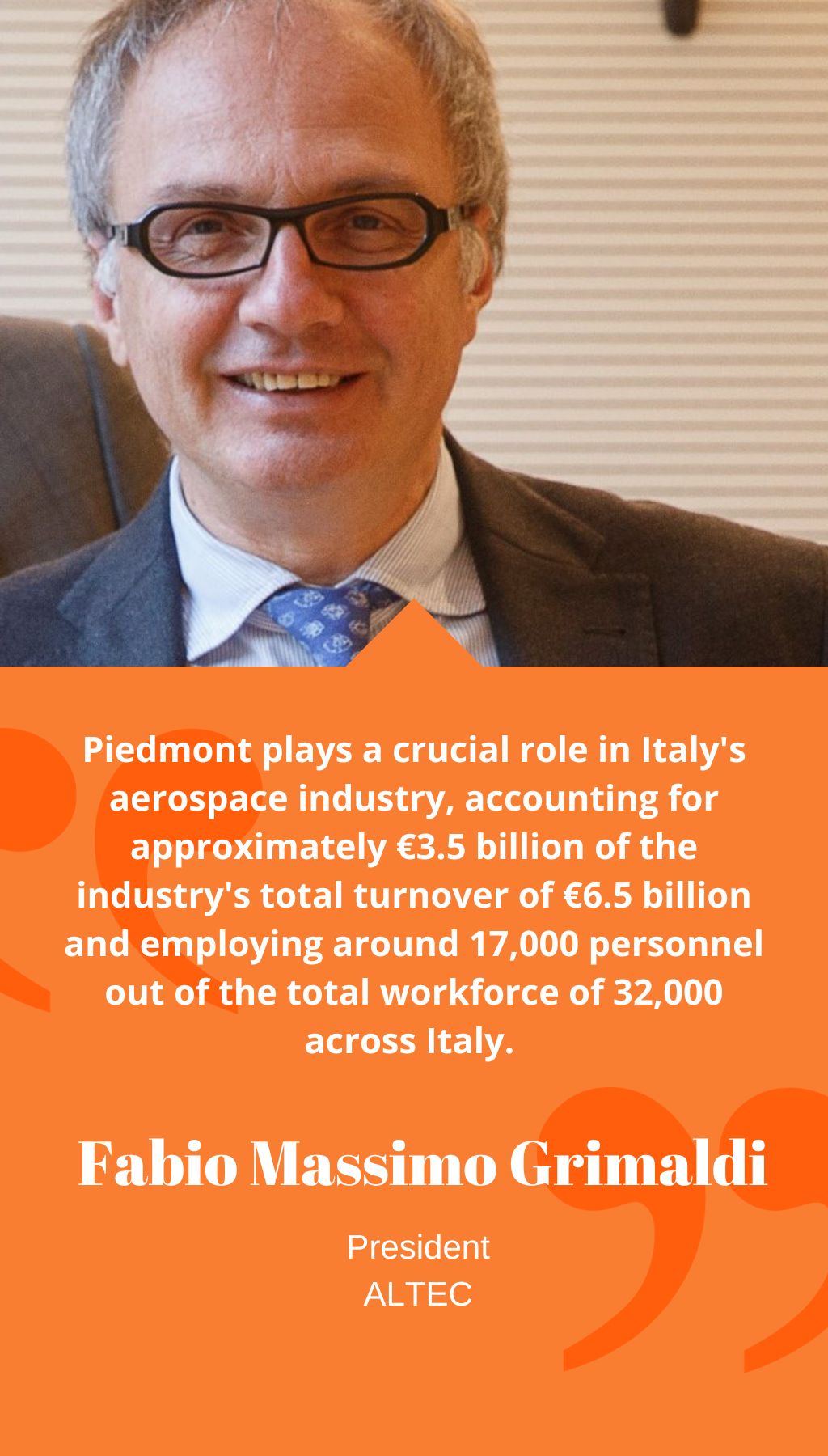
- Italy | 27 February 2018

Could you provide an overview of the founding of ALTEC in 2001 and its development over the past 15 years, including its transition from supporting ISS, ESA, and NASA to also supporting private companies?
ALTEC was established during a critical period for the aerospace industry, marked by temporary lay-offs even at established companies like Alenia Aermacchi. However, the Piedmont region displayed visionary leadership and sought to capitalize on national and international opportunities by forming a consortium called ICARUS. With support from community funds and collaboration between industry leader Alenia and Piedmont institutions such as the Chamber of Commerce and the regional government, ICARUS was able to establish the Multi-Functional Space Center (CMFS). Subsequently, ALTEC was formed as part of ICARUS, with shareholders including ICARUS, Alenia, and the Italian Space Agency (ASI). The goal was to take over this strategically significant sector and leverage regional competencies in pressurized modules. This laid the foundation for the birth of the aerospace station project, marking the initial phase of ALTEC’s development.
How has ALTEC’s funding model been impacted by Leonardo’s ownership of Thales Alenia Space?
Over the years, there have been slight changes in ALTEC’s shareholder structure, with ICARUS exiting and Thales (holding 60% of shares) and ASI (holding 40% of shares) assuming control of ALTEC. While ALTEC does not have direct interaction with Finmeccanica, as it only plays a part in the French joint-venture with Thales, ALTEC operates as a large enterprise under the control of Thales Alenia and ASI, the latter being a government agency. With 80 employees, ALTEC is considered a significant company. While ALTEC does not receive direct funding from initiatives such as Horizon 2020 or ASI due to its shareholder status, it benefits from contracts with Thales for engineering and research services on important projects like ExoMars.
Can you elaborate on ALTEC’s range of capabilities and services?
ALTEC initially started with expertise in pressurized modules and logistics, which has enabled it to become a recognized “center of excellence” at both the European and Italian levels for engineering and logistics services in support of the ISS. Approximately 50% of ISS residential modules and laboratories were manufactured by Thales Alenia Space in Turin, where ALTEC is located, with the rest being built in Japan. ALTEC is also actively engaged in logistics activities for ESA, such as the PMM and Columbus modules. Its facilities boast two control rooms that are permanently connected to NASA and ESA, enabling seamless coordination and communication with these space agencies.
In addition to module manufacturing and logistics, ALTEC is involved in astronaut training and biomedical experiments. For instance, astronauts in orbit recently underwent an experiment related to neck vessels to understand the effects of weightlessness on the human body. ALTEC also carries out data processing activities, such as the GAIA project involving satellite tracking, and is responsible for processing all the mapping data.
How important is the Piedmont region within Italy’s aerospace industry, considering ALTEC is located in Turin?
Piedmont plays a crucial role in Italy’s aerospace industry, accounting for approximately €3.5 billion of the industry’s total turnover of €6.5 billion and employing around 17,000 personnel out of the total workforce of 32,000 across Italy. These numbers highlight the significant contribution of Piedmont’s aerospace sector to Italy’s overall aerospace economy, ranking it as one of the leading sectors within Europe.














